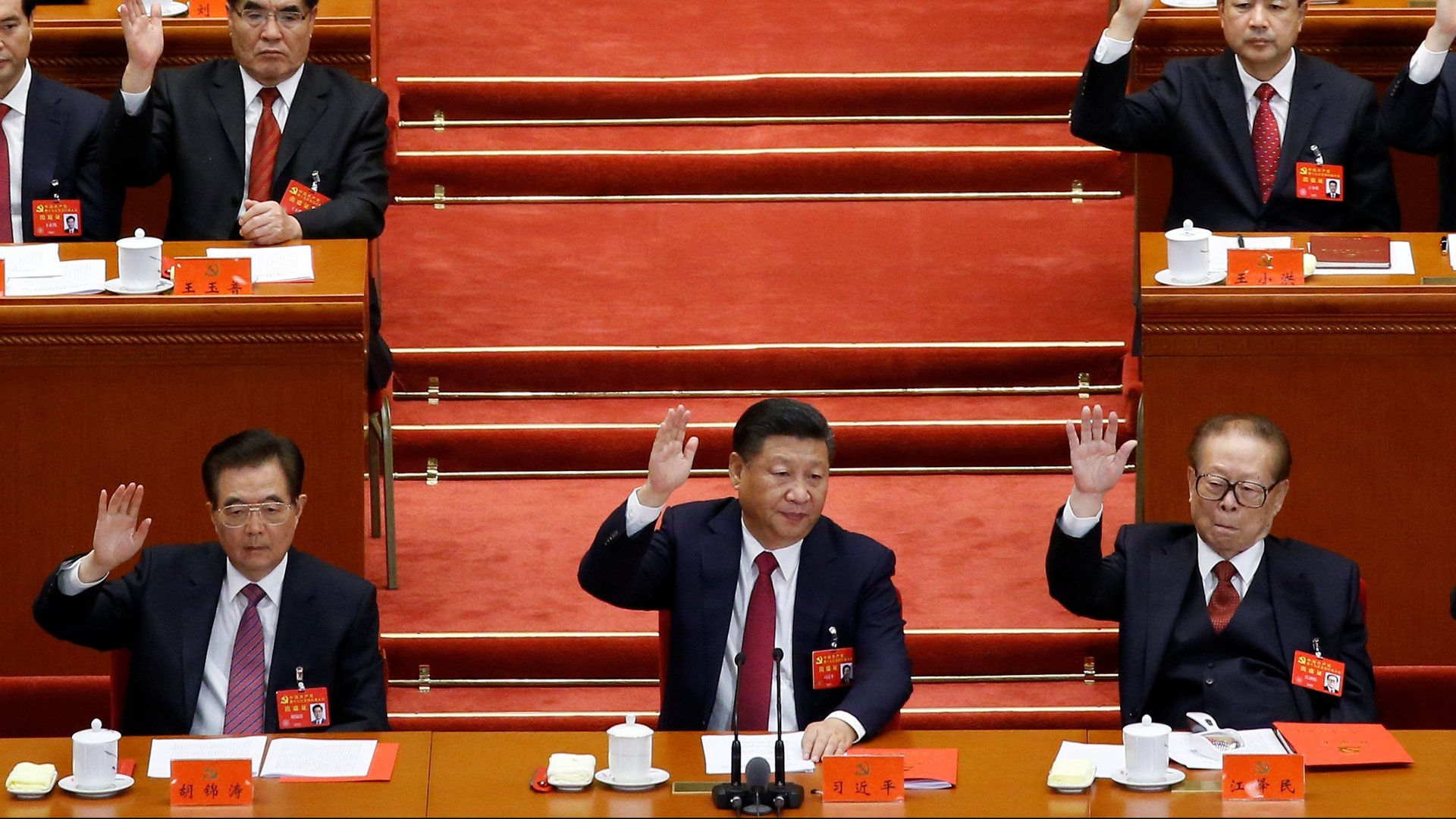A rare look at how China elects its most powerful men confirms voting is just a formality
Today (Oct. 26), the state news agency Xinhua published a lengthy article (link in Chinese) that offers a rare inside look at how China’s seven most powerful men were selected.


Today (Oct. 26), the state news agency Xinhua published a lengthy article (link in Chinese) that offers a rare inside look at how China’s seven most powerful men were selected.
The selection of China’s ruling elite is a mysterious process that involves intense bargaining and horse-trading behind the scenes. All the major decisions announced at the party’s national congress, the twice-a-decade leadership reshuffle event, are believed to have been hammered out in advance. As expected, China’s top leader Xi Jinping was re-elected party chief at the end of the 19th congress this week. He also introduced to the press his six colleagues in the party’s elite Politburo Standing Committee (PSC)—China’s de-facto top decision-making body.
The Xinhua article detailed Xi’s efforts to make voting count even less in the selection of the party’s top leadership team, and instead give himself the biggest say over key personnel moves through face-to-face talks with selected party leaders. It’s a further signal that Xi has amassed more power than any Communist leader since Mao Zedong, and that China’s intricate “collective leadership” is dead (paywall), as some observers claim.
The Xi selection process
According to Xinhua, Xi began to think about the new leadership lineup at the start of this year, and came up with a new procedure for selecting key party and government positions with the outgoing PSC members—face-to-face consultations. Xinhua said such discussions, carried out under the direct supervision of Xi, are applied to the selection of the PSC members, members of the broader 25-strong Politburo, members of the Chinese military’s top decision-making body, and key members of China’s state council, top legislative body, and top political advisory body. It hailed the new procedure as the party’s “grand innovation.”
The criteria for top-post candidates include firm support of Xi Jinping as the party’s “core” leader and his political theory now enshrined in the party’s constitution, Xinhua reported, citing an official document on personnel policy approved by the outgoing PSC this April.
Xi is said to have spoken face-to-face with 57 current and former party leaders about personnel moves between April and June. And as planned by the outgoing PSC, a total of 258 Communist leaders from the military, provincial level and the central leadership have recommended their favored candidates. Their votes are only taken as advice for the final decisions, noted Xinhua, citing the April document.
What has happened to voting
During the leadership transitions in 2007 and 2012, the party’s central leadership had held preliminary voting on top-post candidates in group meetings, Xinhua said. But now-disgraced party officials—including former security tsar Zhou Yongkang, former president’s chief of staff Ling Jihua and former Chongqing party boss Sun Zhengcai—were reported to have bribed voters on those occasions. Xinhua said that the new personnel procedure has prevented political jockeying from happening this time.
“As a comrade working in the local level, having the opportunity to express my views and make recommendations for the new central leadership…is a reflection of our party’s fine tradition of concentrating the whole party’s wisdom,” it quoted a provincial-level official who participated in the face-to-face consultations as saying.
There are three rings of power in the central leadership of the Communist Party: the 200-plus Central Committee, the 25-strong Politburo, and the elite Politburo Standing Committee which currently have seven members. The party’s top 25 and top seven typically take key posts in local and central government. The party has revealed that voting has a small say in the selection of Central Committee members during party congresses, but it rarely talks about the procedures of selecting Politburo and PSC members.
Correction, Oct. 27: Consultations with candidates were conducted face-to-face, but not necessarily on a one-on-one basis, as an earlier version stated.